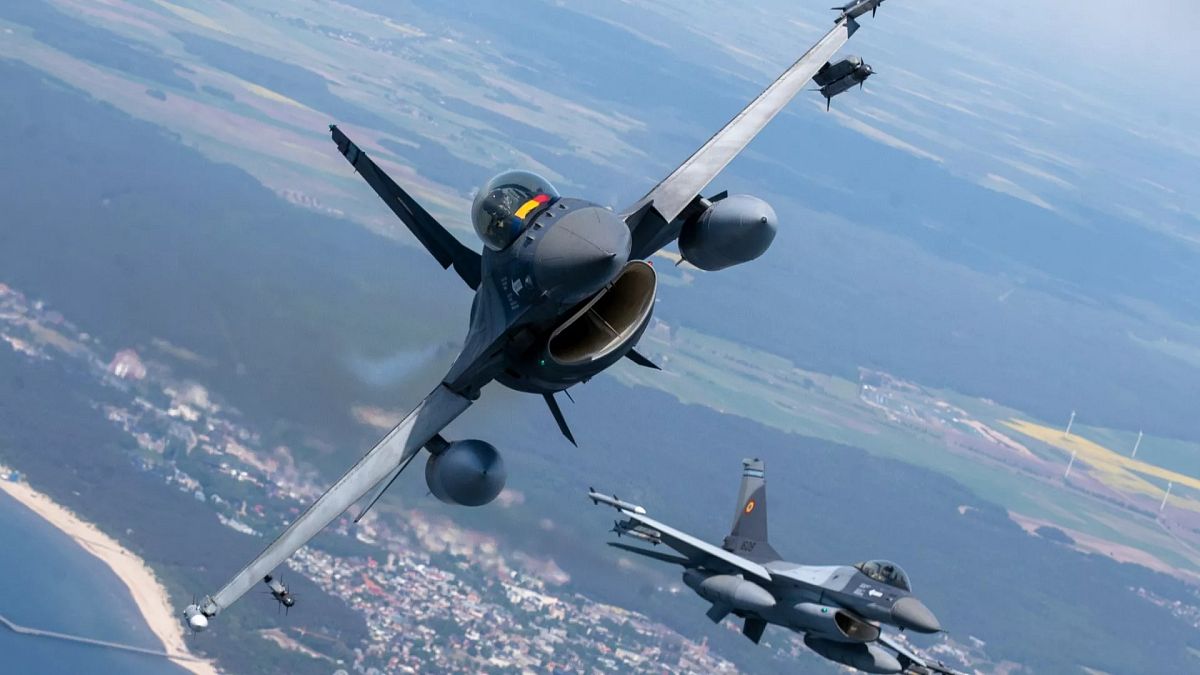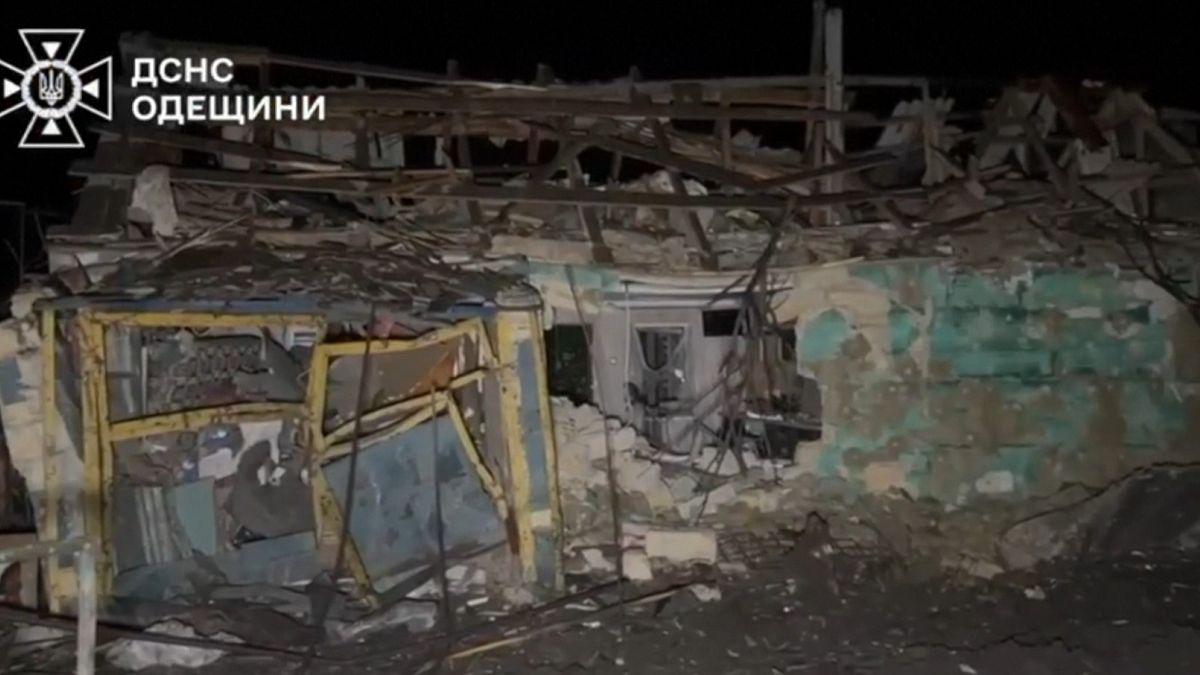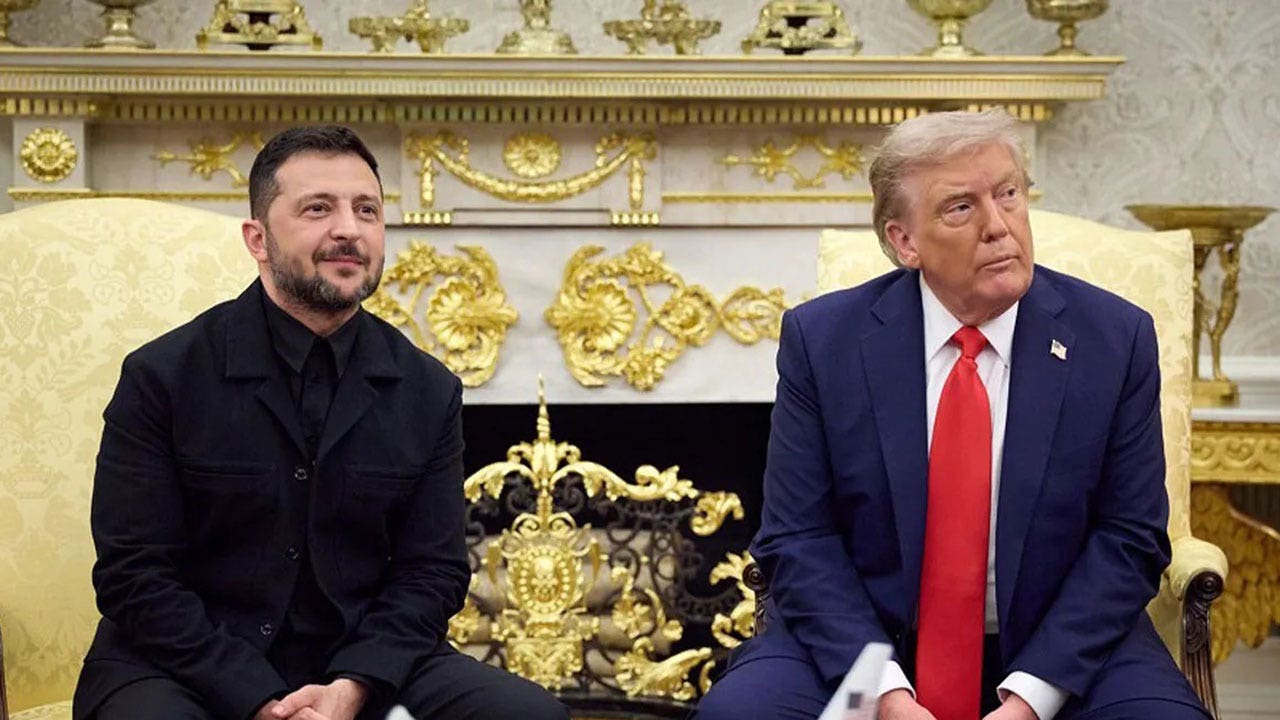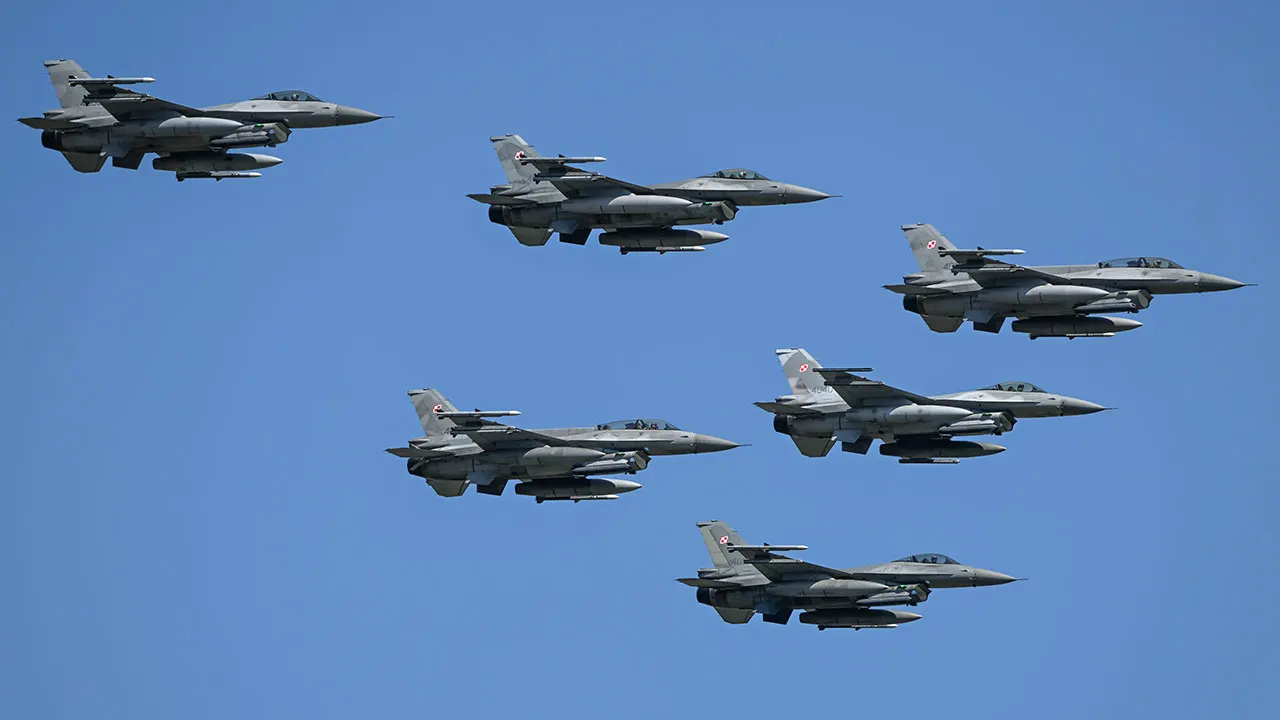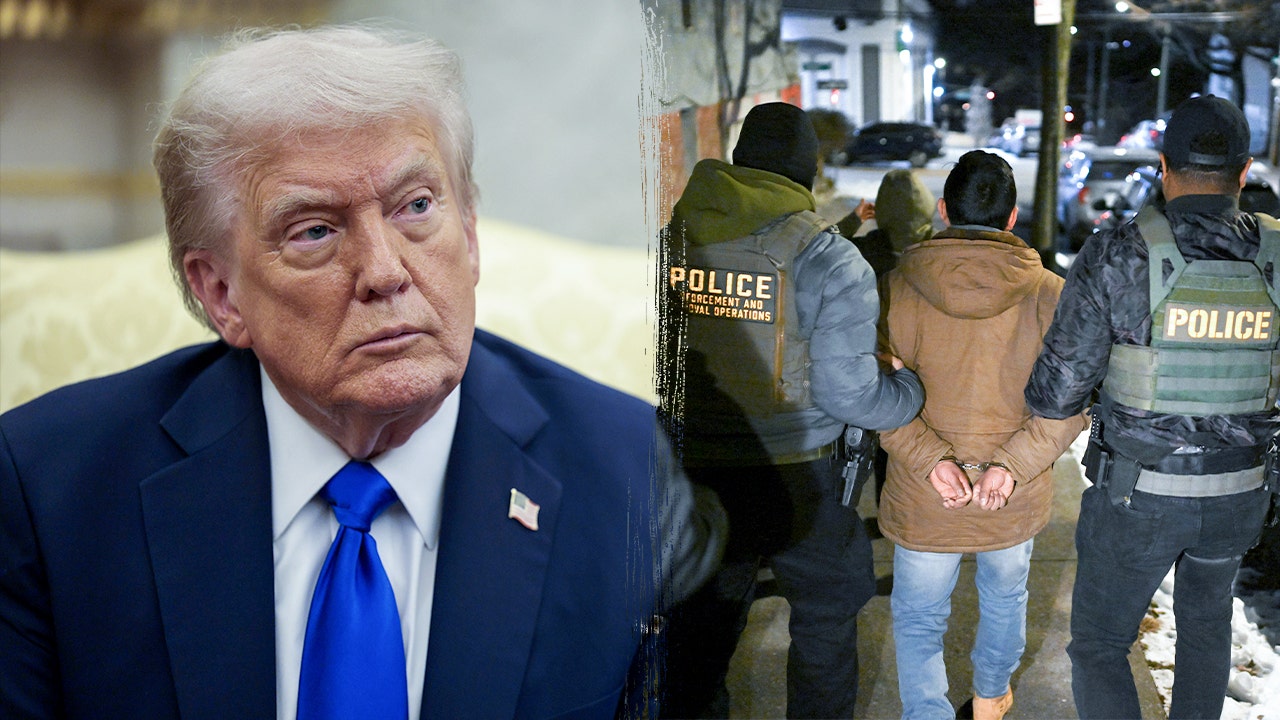- Trump further injects himself into New York City mayoral race
- Tuesday’s election could shape the image of the Democrats
- Mamdani leads polls ahead of Cuomo and a Republican candidate
- U.S. provides $7.4 billion a year to NYC, or 6.4% of its budget
World
Ending Russia's war in Ukraine this year is possible, says Stoltenberg
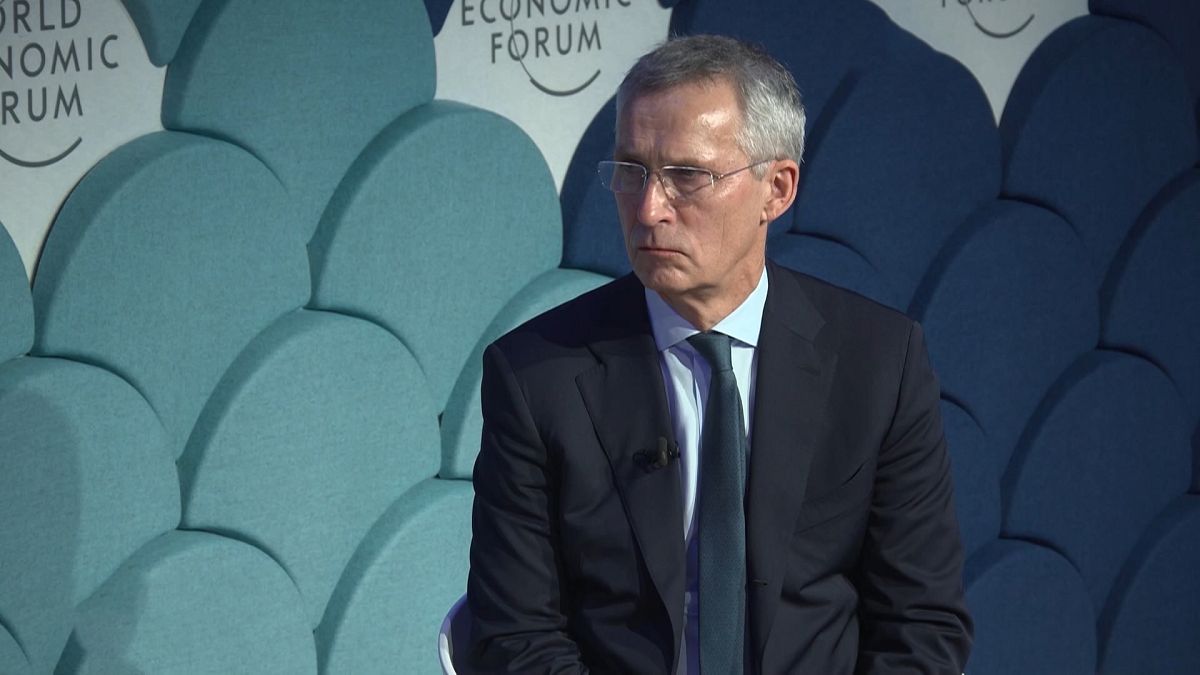
The former NATO secretary general and the head of the Office of the President of Ukraine outlined to Euronews ways to reach a just and lasting peace in Ukraine.
Ending Russia’s all-out war in Ukraine this year is possible, according to former NATO Secretary-General Jen Stoltenberg. However, the head of the Office of the President of Ukraine, Andrii Yermak, cautioned that this would only happen on terms acceptable to the Ukrainian people.
The pair spoke during the World Economic Forum in Davos for a special edition of Euronews’ Europe Conversation.
With Russia’s full-scale invasion of Ukraine almost entering its fourth year, attention is turning to the possibility that the war could come to an end in 2025.
Ukrainian President Volodymyr Zelenskyy presented Kyiv’s victory plan last year as the key framework for achieving a just and lasting peace.
Andrii Yermak, head of the Office of the President of Ukraine, told Euronews in Davos that partners and allies must “make the position of Ukraine strong for any potential future negotiations.”
‘Russia is paying a very high price’
“Wars are by nature unpredictable. So I’m very careful to predict exactly what will happen in 2025,” Stoltenberg told Euronews.
“Having said that, it’s absolutely within reach to end this war this year, not least because Russia is paying a very high price,” he added.
While Russian President Vladimir Putin thought he could take Kiyv within days, Ukraine has pushed back. Meanwhile, casualties are staggering, inflation is now officially around 10% in Russia, the national bank’s interest rate is 21%, and there is an urgent lack of workforce, according to Stoltenberg, putting Putin under pressure.
US President Donald Trump’s return to the White House might lead to an American isolationist retreat, forcing Europeans to step up their support for Kyiv.
Meanwhile, Yermak called for “close cooperation and close unity” between Europe and the US and hoped a meeting between Zelenskyy and Trump would take place “as soon as possible”.
“The challenge is that the quickest way of ending a war is to lose the war. But that will not bring peace. That will bring occupation of Ukraine. So the challenge is to end the war in the way that Ukraine prevails as a sovereign, independent nation in Europe,” Stoltenberg added.
Zelenskyy would never compromise “the independence, territorial integrity and sovereignty of Ukraine”, Yermak said.
One way to achieve a lasting peace in Ukraine is to give solid security guarantees, the strongest of all being Article 5, meaning NATO membership, in Stoltenberg’s views. The second best option would be “to arm Ukrainians to the teeth”.

Continue Reading
World
Trump backs Cuomo, threatens to cut funds for New York City if Mamdani wins mayoral race

WASHINGTON, Nov 3 (Reuters) – U.S. President Donald Trump endorsed former New York Governor Andrew Cuomo for mayor of New York City on Monday and threatened to hold back federal funds to the city if Democratic candidate Zohran Mamdani wins the mayoral election on Tuesday.
Trump, a Republican who has offered frequent commentary on the New York mayoral election, injected himself further into the race by crossing party lines to support Cuomo over Mamdani and the Republican candidate, Curtis Sliwa, who trails badly in public opinion polls in the heavily Democratic city.
Sign up here.
Cuomo, a longtime stalwart in the Democratic Party, is running as an independent after losing to Mamdani in the Democratic primary.
Tuesday’s New York City election has been closely watched nationally as one that could help shape the image of the Democratic Party as it seeks its identity in opposition to Trump. Mamdani, 34, a self-described democratic socialist who is leading Cuomo in the polls, has energized younger and more progressive voters, but he has also alarmed more moderate Democrats who fear a shift too far to the left may backfire.
Republicans have attacked Mamdani’s candidacy throughout the campaign, with Trump casting him as a communist.
“Whether you personally like Andrew Cuomo or not, you really have no choice. You must vote for him, and hope he does a fantastic job. He is capable of it, Mamdani is not!” Trump wrote on his Truth Social platform.
Trump said a vote for Sliwa would only help Mamdani.
“If Communist Candidate Zohran Mamdani wins the Election for Mayor of New York City, it is highly unlikely that I will be contributing Federal Funds, other than the very minimum as required, to my beloved first home,” said Trump, a native New Yorker.
Item 1 of 4 Democratic candidate for New York City mayor, Zohran Mamdani, looks on as he holds a campaign rally on the eve of election day, in the Queens borough of New York City, U.S., November 3, 2025. REUTERS/Shannon Stapleton
[1/4]Democratic candidate for New York City mayor, Zohran Mamdani, looks on as he holds a campaign rally on the eve of election day, in the Queens borough of New York City, U.S., November 3, 2025. REUTERS/Shannon Stapleton Purchase Licensing Rights
The U.S. federal government is providing $7.4 billion to New York City in fiscal year 2026, or about 6.4% of the city’s total spending, according to a report from the New York State Comptroller.
Trump has threatened federal funding cuts throughout his second term in office over climate initiatives, transgender policies, pro-Palestinian protests against Israel’s war in Gaza and diversity, equity and inclusion practices.
Mamdani, a Uganda-born state assembly member, shocked political observers on June 24 with a convincing victory in the primary.
Mamdani has used his campaign to rally New Yorkers against establishment candidates like Cuomo, who was elected governor of New York three times but resigned in 2021 following a report from the New York Attorney General that concluded he had sexually harassed 11 women, including state employees. A U.S. Justice Department investigation later concluded Cuomo subjected at least 13 female state employees to a “sexually hostile work environment.”
“The MAGA movement’s embrace of Andrew Cuomo is reflective of Donald Trump’s understanding that this would be the best mayor for him,” Mamdani said at a campaign event following Trump’s endorsement of Cuomo.
“They (Trump and Cuomo) share the same donors, they share the same small vision, they share the same sense of impunity,” Mamdani said.
Mamdani’s policies include hiking taxes on New York City’s wealthiest, raising the corporation tax rate, freezing stabilized apartment rental rates and increasing publicly subsidized housing.
His rise presents both risks and rewards for the national Democratic Party, which acknowledges the need to appeal to young voters but is wary of Republican attacks over Mamdani’s criticism of Israel’s occupation of Palestinian territories and his democratic socialism, which has concerned New York’s finance community.
Reporting by Kanishka Singh in Washington and Daniel Trotta in Carlsbad, California; Editing by Costas Pitas, Caitlin Webber and Stephen Coates
Our Standards: The Thomson Reuters Trust Principles.
World
Avalanche in Nepal kills 7 climbers on Mount Yalung Ri
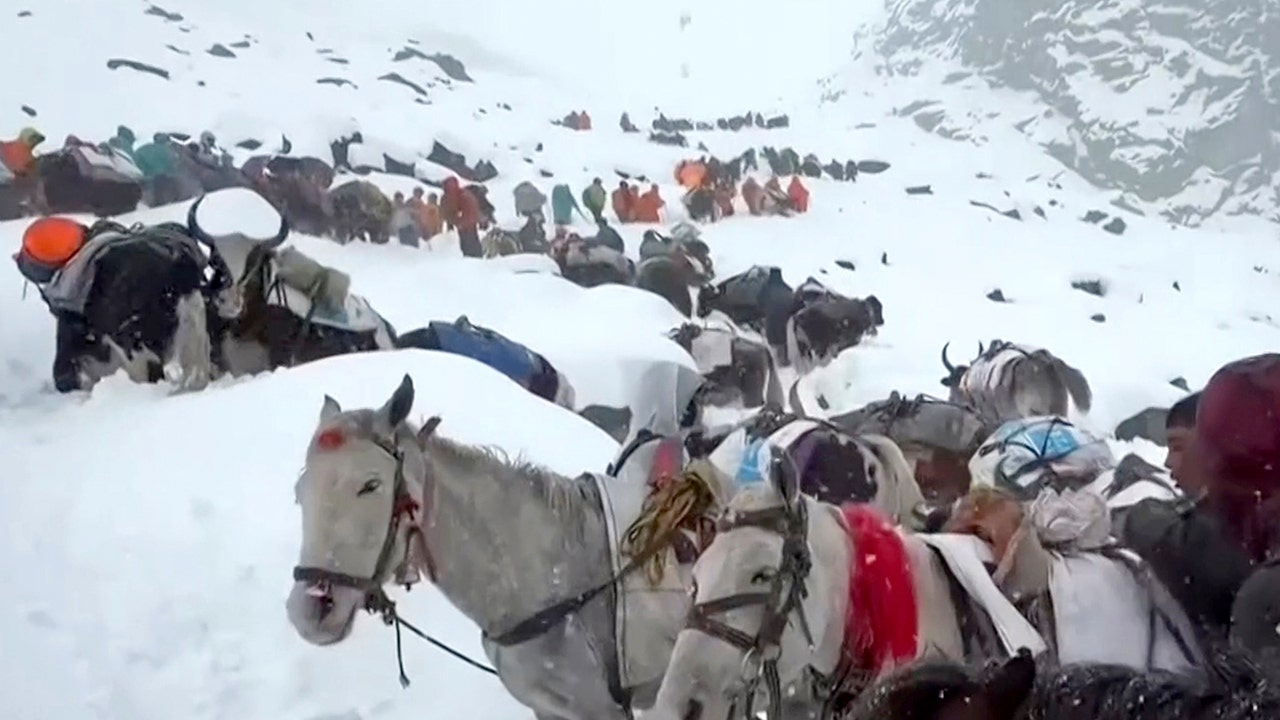
NEWYou can now listen to Fox News articles!
An avalanche on Monday swept through a camp in Nepal, killing five foreign climbers and two Nepali guides, officials said.
Five foreigners were injured at the base camp on Mount Yalung Ri, located at 16,070 feet. Their nationalities and identities have not been disclosed.
A State Department spokesperson told Fox News Digital that the agency was aware of the avalanche and was working to gather information.
“The U.S. Department of State has no higher priority than the safety and security of U.S. citizens,” the spokesperson said. “We are closely monitoring the situation and stand ready to provide consular assistance.”
DAREDEVIL MOUNTAINEER MAKES HISTORY SKIING DOWN MOUNT EVEREST THROUGH DEATH ZONE WITHOUT OXYGEN
Mount Everest is shown in Nepal. On Monday, seven people died at the base camp on Mount Yalung Ri, also in Nepal. (Paula Bronstein/Getty Images)
Rescue crews were reaching the site on foot. A rescue helicopter attempted to reach the site, but bad weather forced it to turn back. Nepal’s Armed Police Force spokesperson Shailendra Thapa said it will try again Tuesday at dawn.
BLIZZARD TRAPS HUNDREDS ON MOUNT EVEREST AS RESCUE TEAMS RACE TO SAVE LIVES
Mount Yalung Ri is an 18,370-foot peak. It’s considered suitable for beginners with no previous experience climbing high mountains.
Nepal is home to eight of the world’s 14 tallest mountains, including Mount Everest.
Earlier this month, a South Korean climber died after getting caught in a powerful storm while attempting to summit a Himalayan peak just south of Mount Everest.

Villagers ascend the mountain during rescue efforts to reach hundreds of hikers trapped by heavy snow at tourist campsites on a slope of Mount Everest. (Lingsuiye via AP)
In the autumn months, climbers often scale smaller peaks before the rainy season and winter months.
World
Two dead as Typhoon Kalmaegi brings massive flooding in central Philippines

Residents seek refuge on rooftops, and cars float through flooded streets on the island of Cebu.
Published On 4 Nov 2025
Rain-soaked residents sought refuge on rooftops, and cars floated through flooded streets as Typhoon Kalmaegi battered central Philippines, killing at least two people, according to the national disaster agency and media reports.
Hundreds of thousands have been displaced by the powerful storm across the Visayas region as well as parts of southern Luzon and northern Mindanao, as Kalmaegi made landfall shortly before midnight.
list of 3 itemsend of listRecommended Stories
By noon local time (04:00 GMT) on Tuesday, Kalmaegi was moving westwards across the islands of Cebu, Negros and Panay with winds of 150km/h (93mph) and gusts of 185km/h, toppling trees and downing power lines.
A video published by DZRH radio’s Facebook page showed homes in Talisay City in Cebu completely submerged, with only rooftops visible.
Similar scenes in other parts of Cebu City, where vehicles and streets were underwater, circulated on social media. In some of the videos, people were heard pleading to be rescued.
A road in the town of Tabuelan, also in Cebu province, was rendered impassable following a landslide.
On the island of Bohol, one person was reported killed after he was pinned down by a fallen tree, according to radio station DYMA.
WATCH: Several individuals called for help at Barangay Dumlog, Talisay City, Cebu on Tuesday morning.
“We cannot cross the roofs,” said uploader Godfrey Senecio.
Cebu Governor Pam Baricuatro is now on her way to Talisay to assess the situation.
“It’s the flooding that placed… pic.twitter.com/KLX2Oz5v4n
— ABS-CBN News (@ABSCBNNews) November 4, 2025
An elderly person drowned after being trapped in his residence on the island of Leyte, according to radio station DZMM.
State weather agency PAGASA said the combination of Kalmaegi and a shear line had brought heavy rain and strong winds across the Visayas and nearby areas.
“Due to interaction with the terrain, Tino may slightly weaken while crossing Visayas. However, it is expected to remain at typhoon intensity throughout its passage over the country,” PAGASA said in a morning bulletin.
More than 160 flights to and from affected areas have been cancelled, while those at sea were advised to head to the nearest safe harbour immediately and to stay in port.
PAGASA warned of a high risk of “life-threatening and damaging storm surges” that could reach more than 3-metre (10-foot) height along coastal and low-lying communities in the central Philippines, including parts of Mindanao.
On Monday, the country’s Office of Civil Defense reported that some 156,000 individuals had been preemptively evacuated.
Kalmaegi comes as the Philippines, which is hit by an average of 20 tropical storms each year, is recovering from a run of disasters, including earthquakes and severe weather events, in recent months.
In September, Super Typhoon Ragasa swept across northern Luzon, killing at least 10 people and forcing government work and classes to shut down as it brought fierce winds and torrential rain.
State weather service specialist Charmagne Varilla told the AFP news agency that at least “three to five more” storms were expected by December’s end.
Scientists warn that storms are becoming more frequent and more powerful due to human-driven climate change.
-

 Milwaukee, WI7 days ago
Milwaukee, WI7 days agoLongtime anchor Shannon Sims is leaving Milwaukee’s WTMJ-TV (Channel 4)
-

 News1 week ago
News1 week agoWith food stamps set to dry up Nov. 1, SNAP recipients say they fear what’s next
-

 Alabama1 week ago
Alabama1 week agoHow did former Alabama basketball star Mark Sears do in NBA debut with Milwaukee Bucks?
-

 News1 week ago
News1 week ago1 dead, 6 injured in shooting at Lincoln University homecoming festivities
-

 Austin, TX1 week ago
Austin, TX1 week agoDia De Los Muertos Austin: Parades, Altars & Events
-

 Culture1 week ago
Culture1 week agoVideo: Tyler Mitchell Breaks Down Three Photos From His New Book
-

 Culture6 days ago
Culture6 days agoVideo: Dissecting Three Stephen King Adaptations
-

 Seattle, WA7 days ago
Seattle, WA7 days agoFOX 13’s Aaron Levine wins back-to-back Jeopardy! episodes
